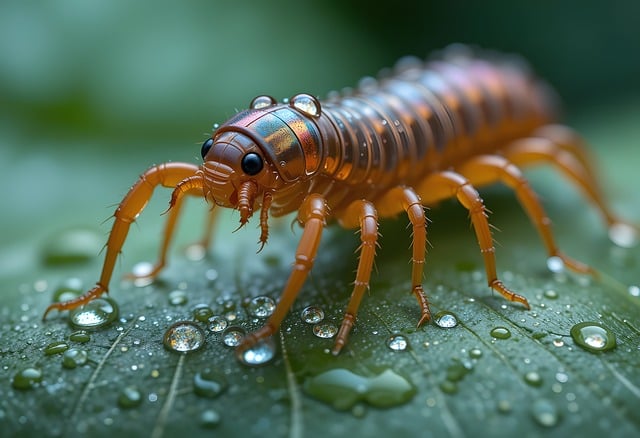Centipede pest control involves tailored strategies by professionals who identify species, their preferences for dark, damp areas, and entry points. Inspections assess microclimates and habitats, leading to plans combining chemical and non-chemical treatments, sealing gaps, and ongoing prevention. Regular monitoring ensures the effectiveness of these measures against highly adaptable centipedes, providing long-term protection for properties.
“Centipedes, though often overlooked, can transform homes and businesses into their bustling habitats. This article guides you through a comprehensive centipede pest control approach tailored to unique property needs. From understanding these creatures’ behavior and preferred habitats to assessing your space for infestations, we offer actionable steps.
We’ll show you how to develop a site-specific control plan, implement it effectively, and monitor success. Take charge of your centipede problem with our expert-backed strategies for a pest-free environment.”
Understanding Centipede Behavior and Habitats
Centipedes are nocturnal creatures that thrive in dark, damp environments, making them well-adapted to hiding in cracks, crevices, and areas with poor ventilation. They feed on a variety of small insects and arachnids, often entering homes in search of food or shelter when their outdoor habitats become scarce. Understanding these behaviors is crucial for effective centipede pest control.
Professionals in centipede pest control tailor their plans to address unique needs based on the specific species and the affected areas within a property. By inspecting the premises to identify entry points, breeding grounds, and common habitats, they can develop strategies that disrupt centipede activity and prevent future infestations. This may include sealing gaps, improving ventilation, using targeted treatments, and implementing ongoing prevention measures to ensure a centipede-free environment.
Assessing Your Property for Centipede Infestation
When dealing with centipede infestations, the first step is a thorough assessment of your property. Centipedes are attracted to properties with ample moisture and organic materials, making them common in areas with lush greenery or near water sources. During inspection, look for signs of these pests like small tracks in dusty areas, web-like patterns woven into corners, or even the centipedes themselves hiding in cracks and crevices.
Professional centipede pest control experts will also consider the unique layout and features of your property. This includes evaluating the foundation, attics, crawl spaces, and any other potential hiding spots. By understanding the specific conditions that attract centipedes, a tailored centipede control plan can be devised to target these areas effectively, ensuring long-lasting protection from these pesky intruders.
Developing a Site-Specific Centipede Control Plan
When developing a centipede pest control strategy, it’s crucial to tailor an approach that considers the unique characteristics of each site. Centipedes are highly adaptable creatures, making one-size-fits-all solutions ineffective. A comprehensive plan should start with an extensive inspection to identify species present and their behavior patterns. For instance, some centipedes prefer moist environments, while others thrive in dry, crackly areas, dictating specific treatment methods.
Site-specific control involves understanding the microclimates within a property, from lush gardens to wooden structures. Professional exterminators employ advanced techniques like targeted chemical applications and non-chemical solutions, such as sealing entry points and modifying habitats, to ensure centipedes are managed effectively without causing harm to other insects or the environment.
Implementing and Monitoring the Customized Control Strategy
Implementing a customized centipede pest control strategy requires meticulous planning and execution. It involves identifying the specific centipede species infesting an area, understanding their behavior, and tailoring control measures accordingly. This might include using targeted insecticides, implementing physical barriers, or employing biological control agents. Monitoring is a critical aspect of this process; regular inspections help assess the effectiveness of the chosen strategy. By regularly checking for centipede presence, activity, and potential new entry points, you can quickly adapt and refine the control plan as needed. This proactive approach ensures that centipede populations are effectively managed, preventing future infestations and protecting properties from these persistent pests.
When dealing with centipede infestations, a tailored approach is key. By understanding these pests’ behavior, assessing your property, and developing a site-specific control plan, you can effectively manage centipedes. Customized centipede pest control strategies ensure targeted treatments, minimizing environmental impact. Regular monitoring allows for quick adjustments, making it a comprehensive solution for long-term protection against these multifaceted invaders.
